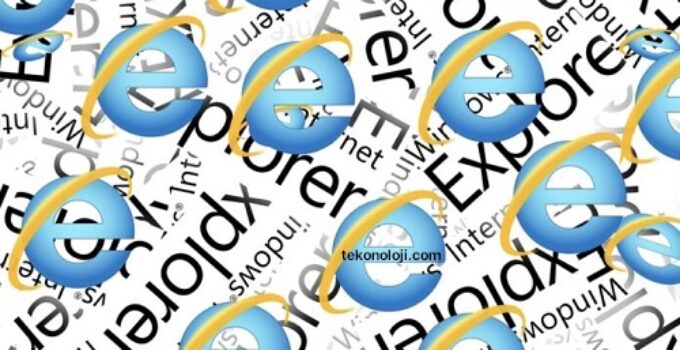The end has come for Internet Explorer. In life there are questions that are not answered, indeed they go unsolved. And others don’t, he finds an answer. For example, the question of whether we would ever see the end of Internet Explorer.
After the update to iOS 16.3.1 the Google Photos app no longer works
If you click on its icon, you go nowhere. In fact, as of today the software no longer starts. Indeed, a screen clearly says to use Edge
And its end answers this very question: will we ever see the end of Internet Explorer? The answer is simple: yes.
Microsoft’s sense of networking
Beyond the need for a closure, which is typical of the intrinsically analogical nature of the human mind (which, as is known, does not like to “jump”), the end of Internet Explorer has a wider and not just symbolic meaning . But let’s start with the latter.
Internet Explorer was the first vehicle in which most people discovered the world wide web (and the whole internet, for that matter). Definitely on Windows, but also on Macintosh, despite the fact that Apple’s platform in the golden years of the new economy had a fair amount of small alternative browsers. For the Apple world, however, Internet Explorer was even one of the pillars of the company’s rebirth with the return of Steve Jobs at the helm of the shack (in the sense that Apple barely held together) in 1997.
It was Jobs who presented Bill Gates via video conference during a keynote that year to announce that not only would Microsoft invest a small stake in Apple’s shares (which later yielded a not so small fortune to the Redmond company) but that it would invest for a new version of the Office personal productivity package (i.e. Word, Excel and PowerPoint) and especially for Internet Explorer. A key move.
A matter of exclusivity
Seeing the importance of Internet Explorer as a browser from the point of view of the Mac makes it easier to understand the power that Microsoft was able to achieve in the golden years of the new economy. In fact, most of the sites were navigable serenely only using Bill Gates’ browser and above all the public administration or large companies, when they provided online services, did so using and abusing Microsoft’s proprietary technologies, usable via the Web only by surfing the Internet explorer.
This position gradually became more and more “heavy” and already at the time of the 1997 agreement it had generated a certain clamor because the American antitrust had decided to investigate. The idea was that Internet Explorer was an unregulated key technology. And that Microsoft had ambitions of unfair competition from a position of strength (abuse of monopoly power) because Internet Explorer was pre-installed in Microsoft’s operating system and could not be done without. In fact, Bill Gates’ browser couldn’t even be uninstalled without compromising its usability, given that it was also used as a window manager and for displaying documents on the computer.
The king of the web
For years the percentages of use of Internet Explorer have been very high, practically Bulgarian. And they have led, in addition to the development of sites with non-standard technologies and indeed compatible only with the Microsoft browser, also to widespread insecurity on the net, because Internet Explorer quickly gained a reputation for being a kind of magnet for malware and attacks of cyber criminals. A kind of clay pot in a world populated by iron hammers.
Since its inception in 1995, the goal of Internet Explorer had been to block any competitor and become the vehicle with which Microsoft controlled the web experience and therefore the internet of users. This after the company had initially tried to propose its own network technology, an “internet made in Redmond” wanted by Bill Gates which however had soon had to surrender to the evidence that users preferred the web based on open protocols and standards , created by Tim Berners-Lee and shared with all companies.
The great enemy was Netscape Navigator and then Mozilla, which would give way to Firefox while Safari (Apple) and Chrome (Google) were still to come. It was then Chrome, rather than the browser of the Mozilla foundation or that of Apple, that gave the push to the end of the first decade of the 21st century.
Thus, Explorer, now with a legacy of old technologies no longer sustainable for a modern browser, has become a kind of elderly patriarch kept on artificial life more to promote the compatibility of server systems of companies and administrations that had embraced the technologies that were proprietary and had no way or resources to be able to update them to the open standards of web 2.0.
Goodbye Internet Explorer and thanks for all the fish
Thus reduced to a kind of “walking dead” for at least three years, Internet Explorer has now really come to the end of the race. And to avoid the problem of having to continue to manage this code base and therefore this level of potential insecurities on Windows (given the ease with which Internet Explorer bombed and crashed even the operating system that hosted it) and on the servers to which connects, Microsoft installed some sort of end-of-the-world timer that went off. No more booting, no more legacy version.
